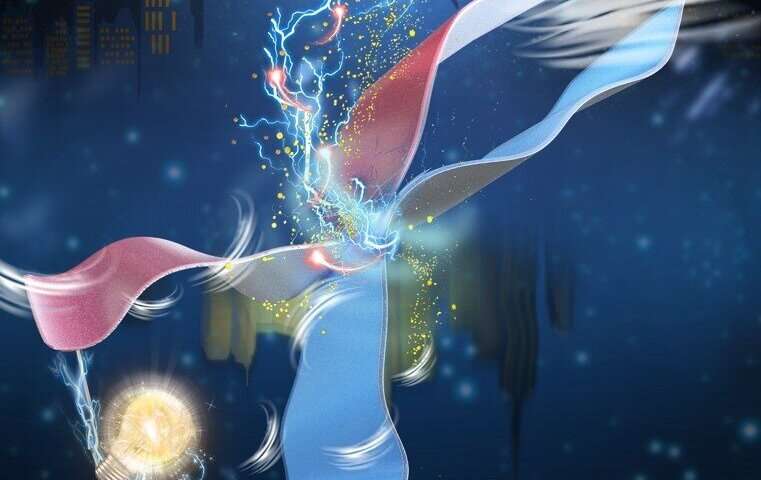Tiny device can scavenge wind energy from the breeze you make when you walk
25. 9. 2020 | Tech Xplore | www.techxplore.com
Most of the wind available on land is too gentle to push commercial wind turbine blades, but now researchers in China have designed a kind of "tiny wind turbine" that can scavenge wind energy from breezes as little as those created by a brisk walk. The method, presented in the journal Cell Reports Physical Science, is a low-cost and efficient way of collecting light breezes as a micro-energy source.
The new device is not technically a turbine. It is a nanogenerator made of two plastic strips in a tube that flutter or clap together when there is airflow. Like rubbing a balloon to your hair, the two plastics become electrically charged after being separated from contact, a phenomenon called the triboelectric effect. But instead of making your hair stand up like Einstein's, the electricity generated by the two plastic strips is captured and stored.

A breeze as gentle as 1.6 m/s (3.6 mph) was enough to power the triboelectric nanogenerator designed by Yang and his colleagues. The nanogenerator performs at its best when wind velocity is between 4 to 8 m/s (8.9 to 17.9 mph), a speed that allows the two plastic strips to flutter in sync. The device also has a high wind-to-energy conversion efficiency of 3.23%, a value that exceeds previously reported performances on wind energy scavenging. Currently, the research team's device can power up 100 LED lights and temperature sensors.
Read more at Tech Xplore
Image Credit: Xin Chen, Xiaojing Mu, and Ya Yang
-jk-




